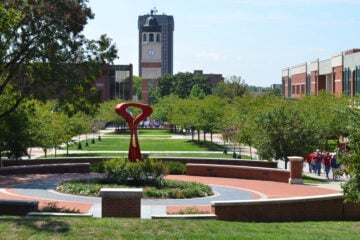Pennsylvania pubTV could see funding restored six years after being zeroed out
Pennsylvania’s governor has proposed restoring funding for the state’s public TV stations, six years after a previous lawmaker cut all support.
Gov. Tom Wolf (D) included a $4 million line item in his proposed 2015–16 executive budget “to increase technology to educate, inform and connect the citizens of Pennsylvania.” If approved by the legislature, the proposal would restore funding cut in 2009.
“It is the most positive measure we’ve seen in the last six years,” said Kathleen Pavelko, g.m. of WITF-TV in Harrisburg, Pa.
Wolf’s proposal stemmed from work by the state’s eight TV stations, said Tim Fallon, c.e.o. of WLVT in Bethlehem, Pa. The pubcasters put together the first-ever public television caucus in the state legislature, comprising 68 of 253 members.
“I’ve probably spent a third of my time on this issue,” Fallon said. “But the stars really aligned in this case.”
However, with the state facing a $1.7 billion deficit, the stations are not taking for granted that lawmakers will enact the recommendation, Fallon said.
“We are not done yet,” Fallon said. “I tell people we’re in the bottom of the seventh and we’re down one run to keep us focused.”
It helps that Wolf has a background in public TV. The governor, who took office in January, served on WITF’s board of directors from 1989–99 and as chair from 1991–95. He also worked as interim c.e.o.
“So he was very knowledgeable and supportive of public television,” Pavelko said.
Before cutting all funding, lawmakers had earmarked more than $12 million for public television in 2007. Stations lost 90 percent of their funding in 2008 and the remaining 10 percent the following year, according to Pavelko. After the reduction, the state’s public TV stations cut a total of 250 jobs.
“It was, and remains, the single most difficult phase of my professional career,” Pavelko said.
Now Pavelko is optimistic that legislators will approve Wolf’s $4 million in support. Pubcasters are working with the public TV caucus to add another $4 million to the total. If the final budget includes $8 million for public TV, WITF’s budget would grow by as much as 9 percent.
Even the proposed $4 million would have a dramatic effect on the bottom line for stations. “This amounts to 18 percent of my budget if it’s restored,” Fallon said. “This is real money.”
Legislators face a deadline of June 30 to pass a budget.
“We’ve got good, solid bicameral, bipartisan support for what we’re doing in Pennsylvania,” Fallon said. “We still have a long way to go, but we’re encouraged that we have support from the governor and legislators.”





